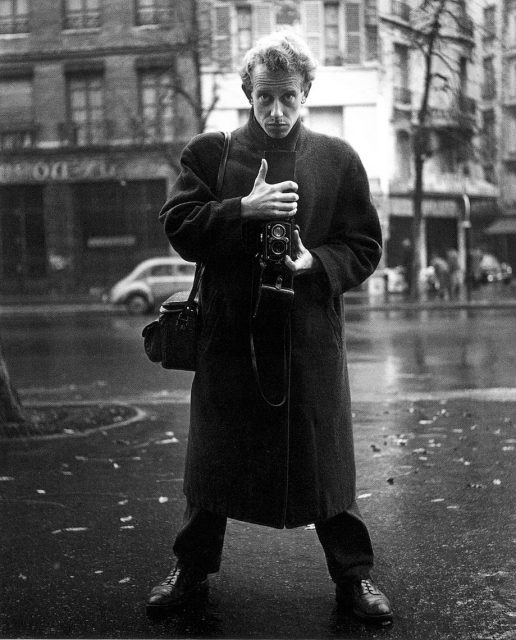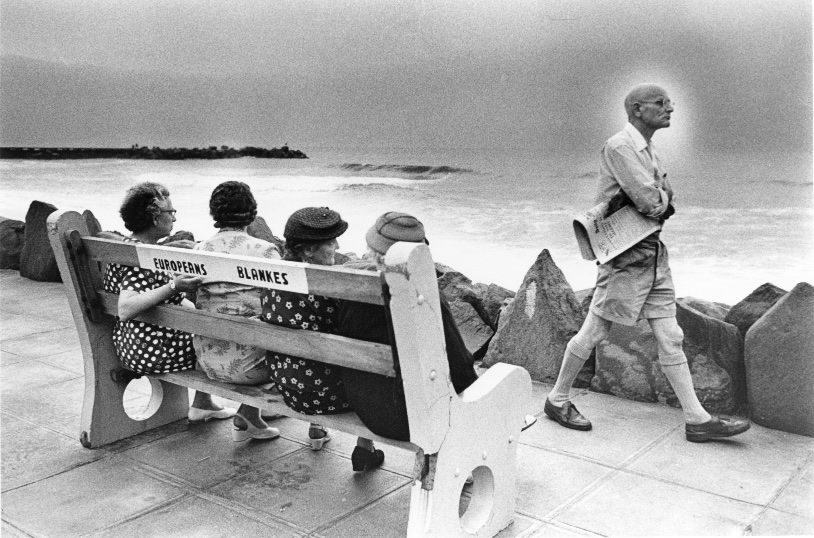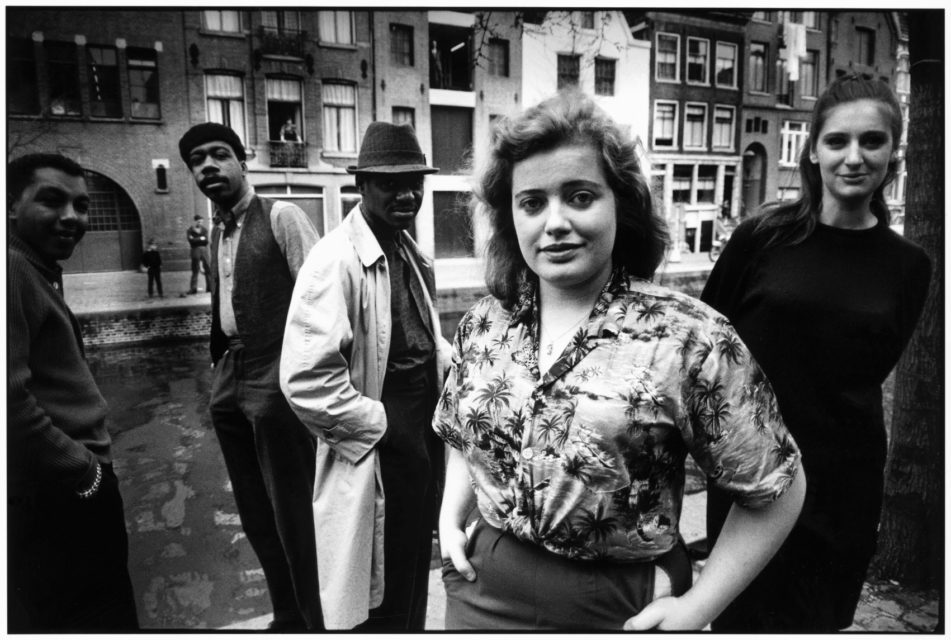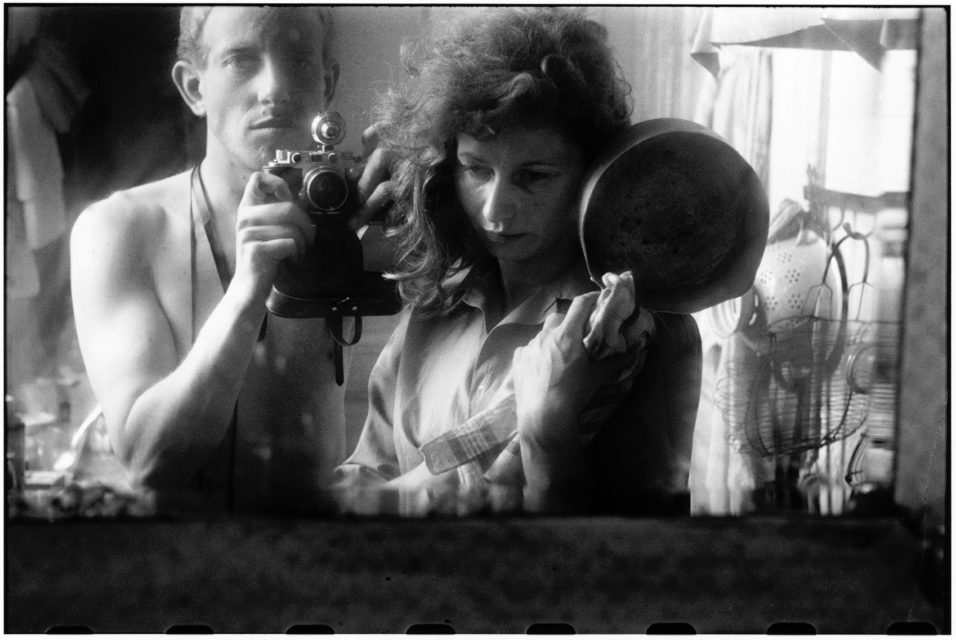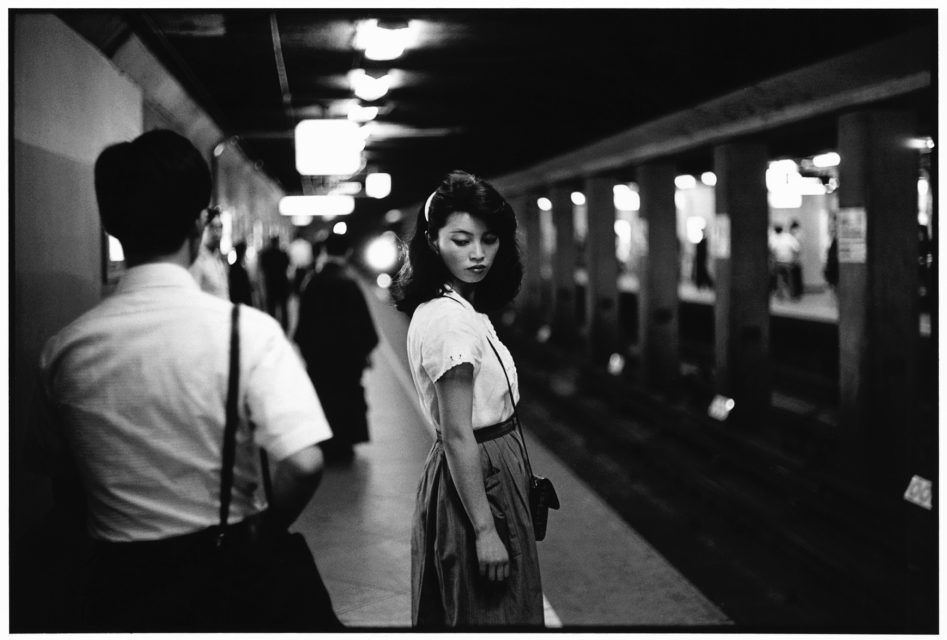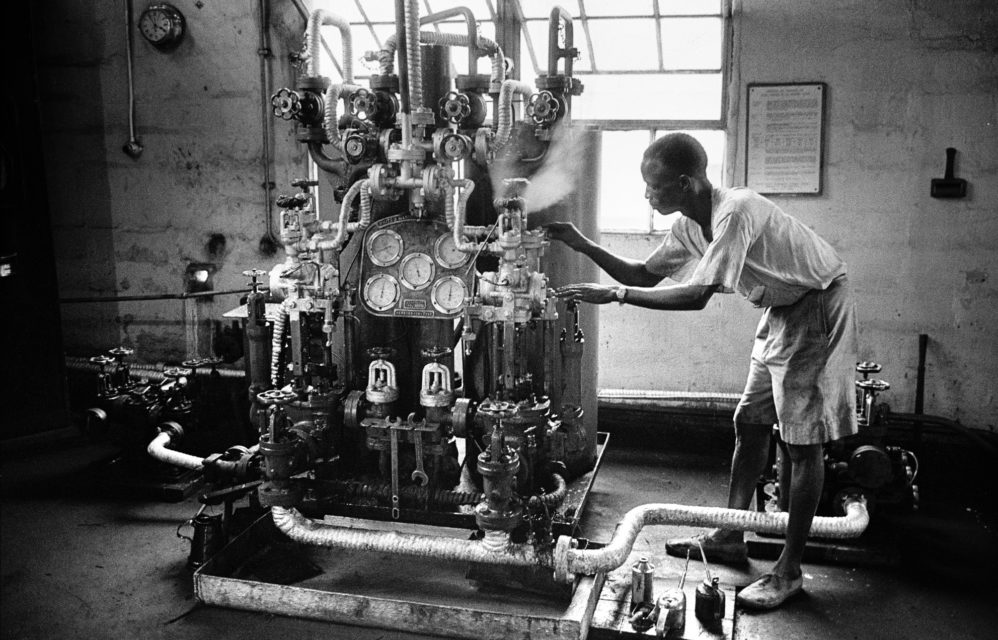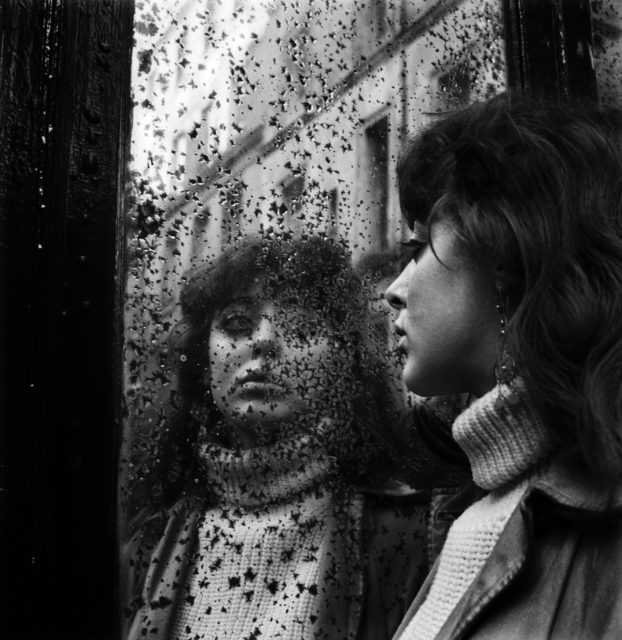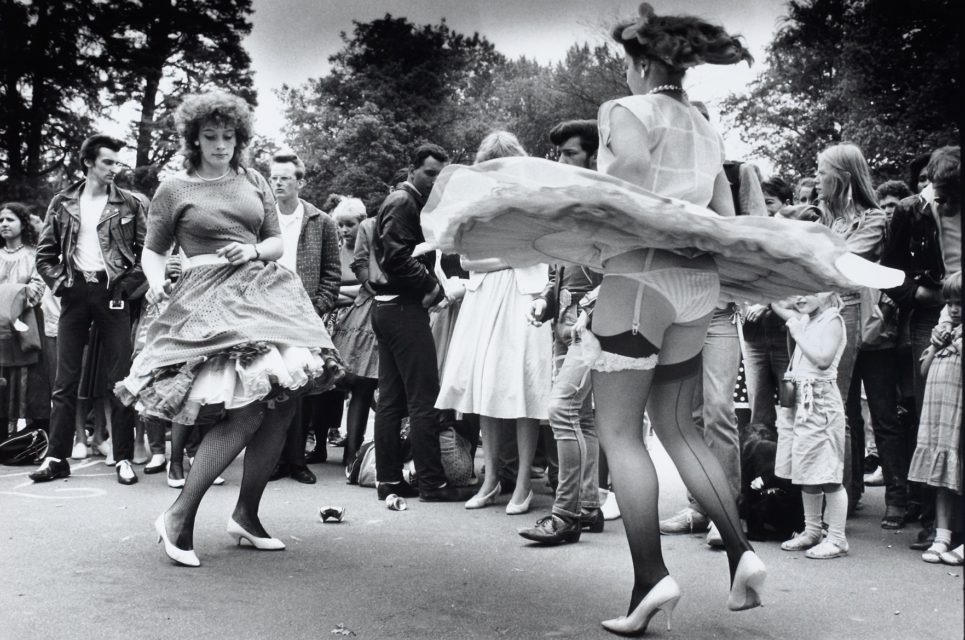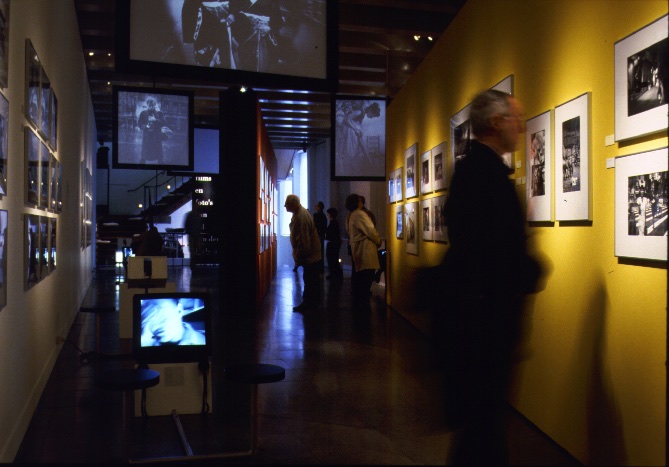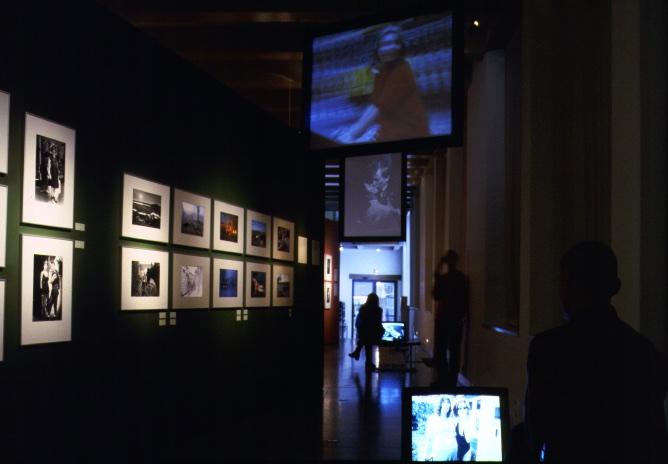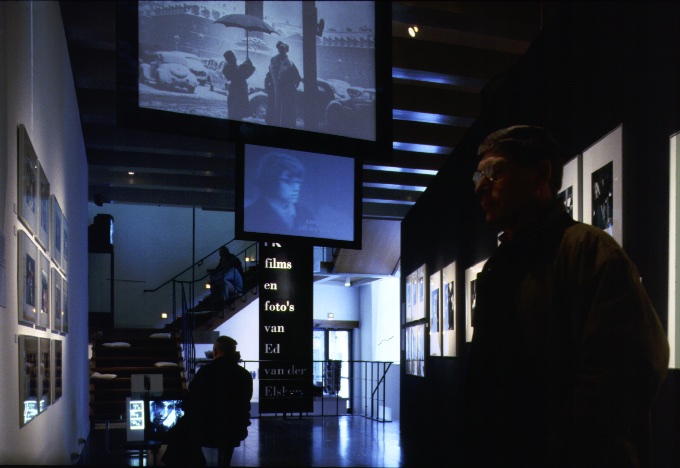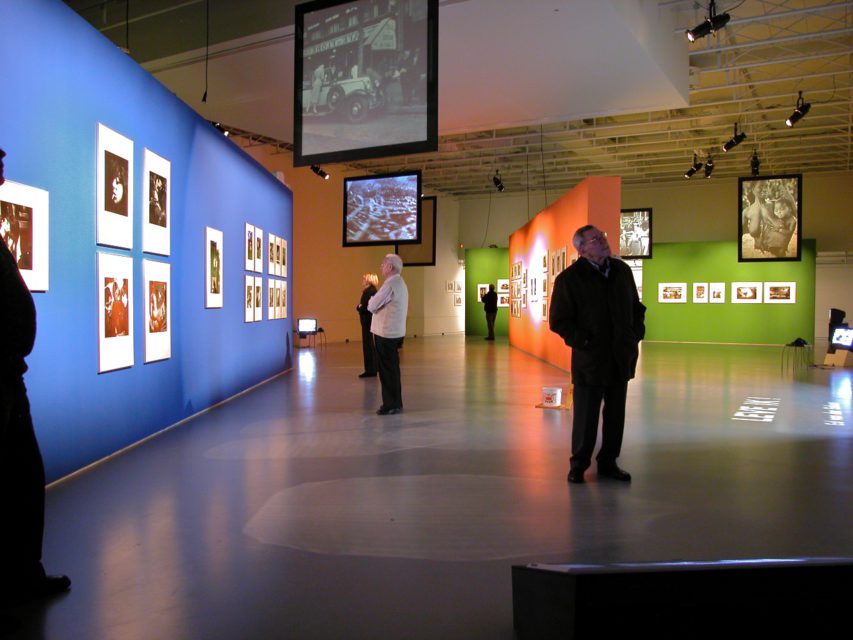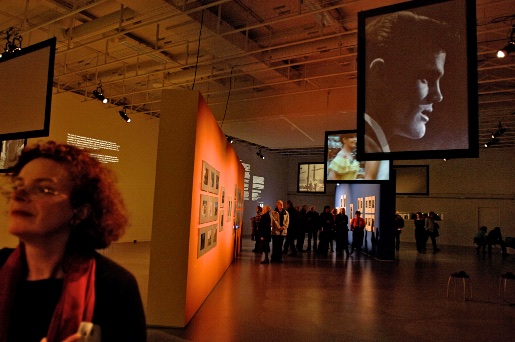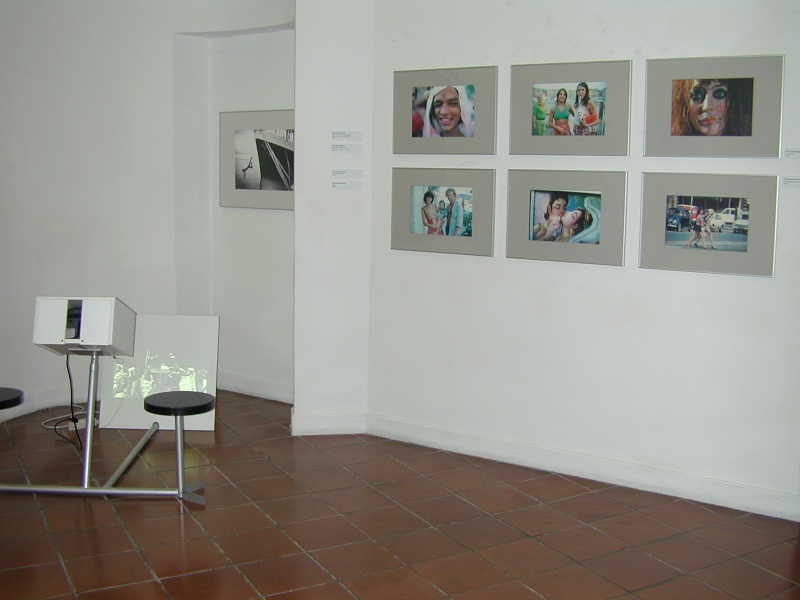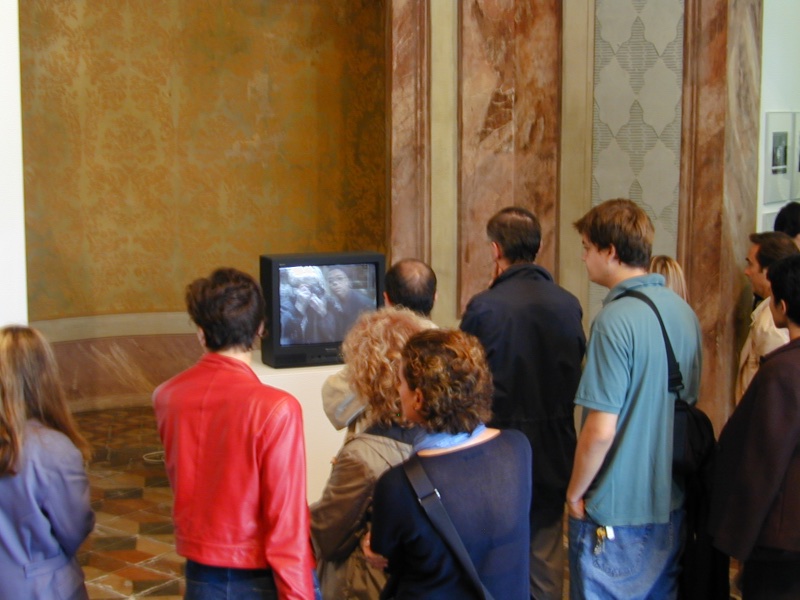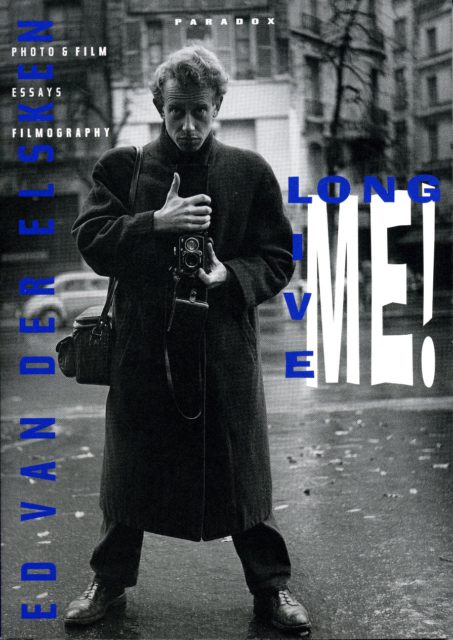Ed van der Elsken (1925-1990) was a unique figure in Dutch photography. Seen internationally, he was at the top of his genre of street photography. His photography bears an affinity with the ‘decisive moments’ of Henri Cartier-Bresson, with William Klein’s probing shots and with the suggestiveness of Robert Frank.
The exhibition examines the relationship between his photographs and films, which are less well-known. Van der Elsken found the majority of his subjects in the working class neighbourhoods of large cosmopolitan cities: Paris, Amsterdam, Hong Kong, Tokyo. In contrast to what he often himself claimed, he was not a photographer of the fringes. He was in search of a form of beauty which could best be described as plastic, earthy and sometimes undisguisedly erotic. In fact he was fascinated by people who exuded pride, vitality and a certain measure of exuberance.
These are qualities which strongly determined his own character. Van der Elsken photographed his people in situations which often have a theatrical dimension and to which he would put his own director’s hand when need be. In many of his photographs it looks as though he has literally engaged his subjects in a dialogue. He knew how to make contact, with his lively presence and fierce look. He challenged people to accentuate the character traits he perceived in them.
A description of this nature applies to the heart of his work, of course, but it is by no means complete: along with explicitly theatrical, extroverted images, one also finds countless quiet and heartrending scenes throughout his work which bear witness to a poetic disposition and to a feeling of sympathy and solidarity with people, and on occasion with animals as well.
Exhibition
The exhibition examines the relationship between his photographs and films, which are less well-known. Van der Elsken found the majority of his subjects in the working class neighbourhoods of large cosmopolitan cities: Paris, Amsterdam, Hong Kong, Tokyo. In contrast to what he often himself claimed, he was not a photographer of the fringes. He was in search of a form of beauty which could best be described as plastic, earthy and sometimes undisguisedly erotic.
Book
In total, Ed van der Elsken completed just under twenty books of photographs. It was his preferred means of presentation. Although his books were designed by professional designers who are known for their own personal outlooks (Jurriaan Schrofer, Anthon Beeke), he determined the layout to an important degree and he usually also wrote the introductory texts himself. These books of photographs were characterized by tremendous liveliness and spirit. Pages with numerous photos placed tightly against one another are interspersed with enlarged images covering the double spread. The image originally photographed was never an unalterable given for Van der Elsken, as is apparent from the frequently very diverse cropped details, prints and combinations of images. The texts consist of background information, often written down directly as he spoke, often pointedly phrased.
-
Tot bijna zijn laatste snik was de belangrijkste gesprekspartner van Ed van der Elsken de wereld. Hij wilde die verleiden, er indruk op maken, er zijn ideeën, zijn liefdes, zijn emoties, zelfs zijn ziekte en naderende dood mee delen.
-
In zijn fotowerk wordt hij erkend als de straatfotograaf pur sang, de portrettist van het volle leven. In zijn films is het niet anders. Het draait daar alleen, en nog exploderender, ook om hemzelf.
-
Ed van der Elsken was op zijn manier een exhibitionist, iemand die schaamteloos
gemakkelijk zijn lichaam, zijn aftakeling, zijn paniek kon en wilde laten zien.
